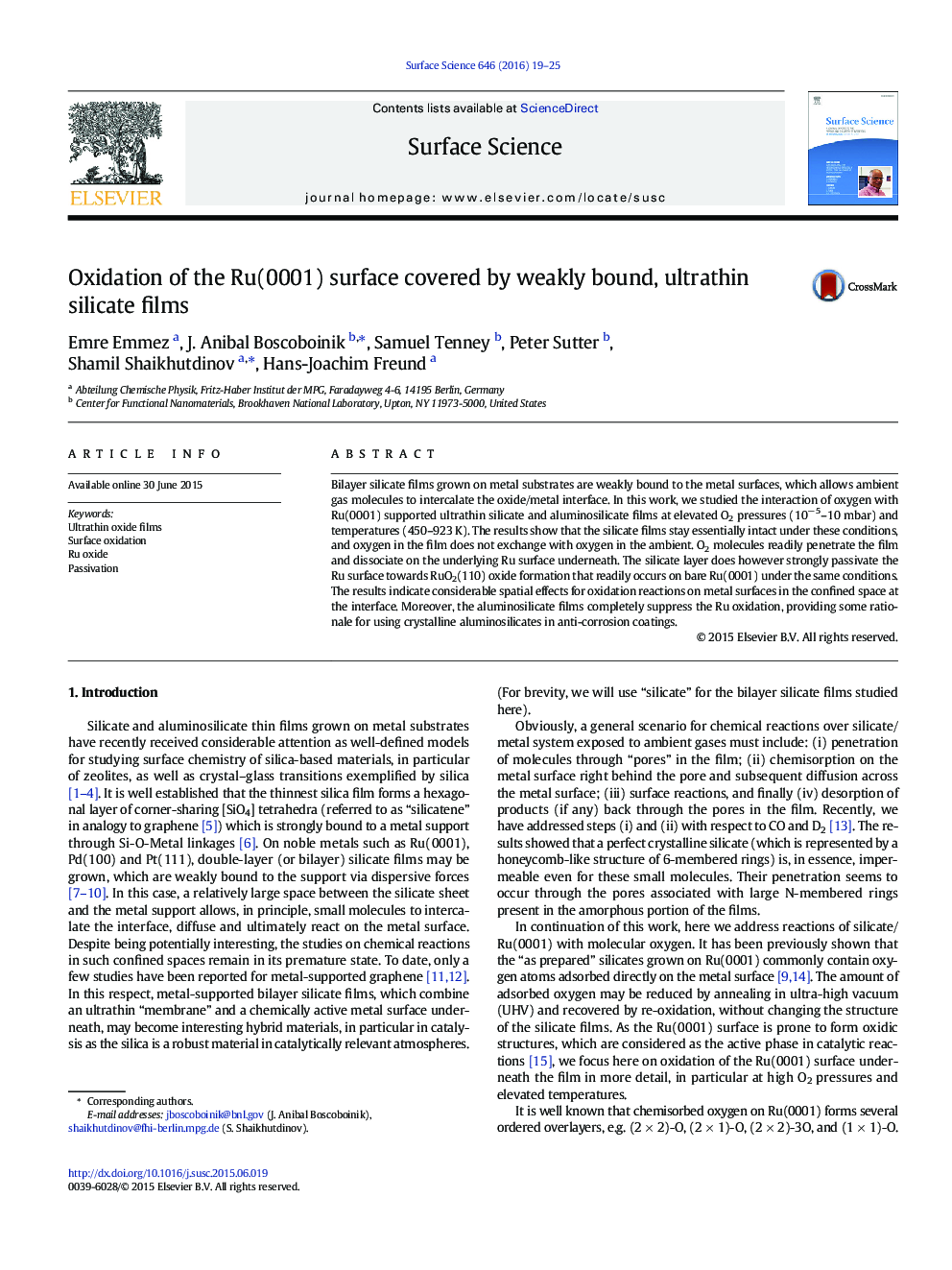| Article ID | Journal | Published Year | Pages | File Type |
|---|---|---|---|---|
| 5421465 | Surface Science | 2016 | 7 Pages |
â¢We studied incorporation of oxygen into Ru(0001) underneath silicate and aluminosilicate films;â¢Oxygen in the silicate does not scramble with oxygen in the ambient even at near atmospheric pressures and elevated temperatures;â¢The results indicate considerable spatial effects for oxidation of metal surfaces in the confined space;â¢The aluminosilicate films completely suppress the Ru oxidation.
Bilayer silicate films grown on metal substrates are weakly bound to the metal surfaces, which allows ambient gas molecules to intercalate the oxide/metal interface. In this work, we studied the interaction of oxygen with Ru(0001) supported ultrathin silicate and aluminosilicate films at elevated O2 pressures (10â 5-10 mbar) and temperatures (450-923 K). The results show that the silicate films stay essentially intact under these conditions, and oxygen in the film does not exchange with oxygen in the ambient. O2 molecules readily penetrate the film and dissociate on the underlying Ru surface underneath. The silicate layer does however strongly passivate the Ru surface towards RuO2(110) oxide formation that readily occurs on bare Ru(0001) under the same conditions. The results indicate considerable spatial effects for oxidation reactions on metal surfaces in the confined space at the interface. Moreover, the aluminosilicate films completely suppress the Ru oxidation, providing some rationale for using crystalline aluminosilicates in anti-corrosion coatings.
Graphical abstractDownload high-res image (70KB)Download full-size image
